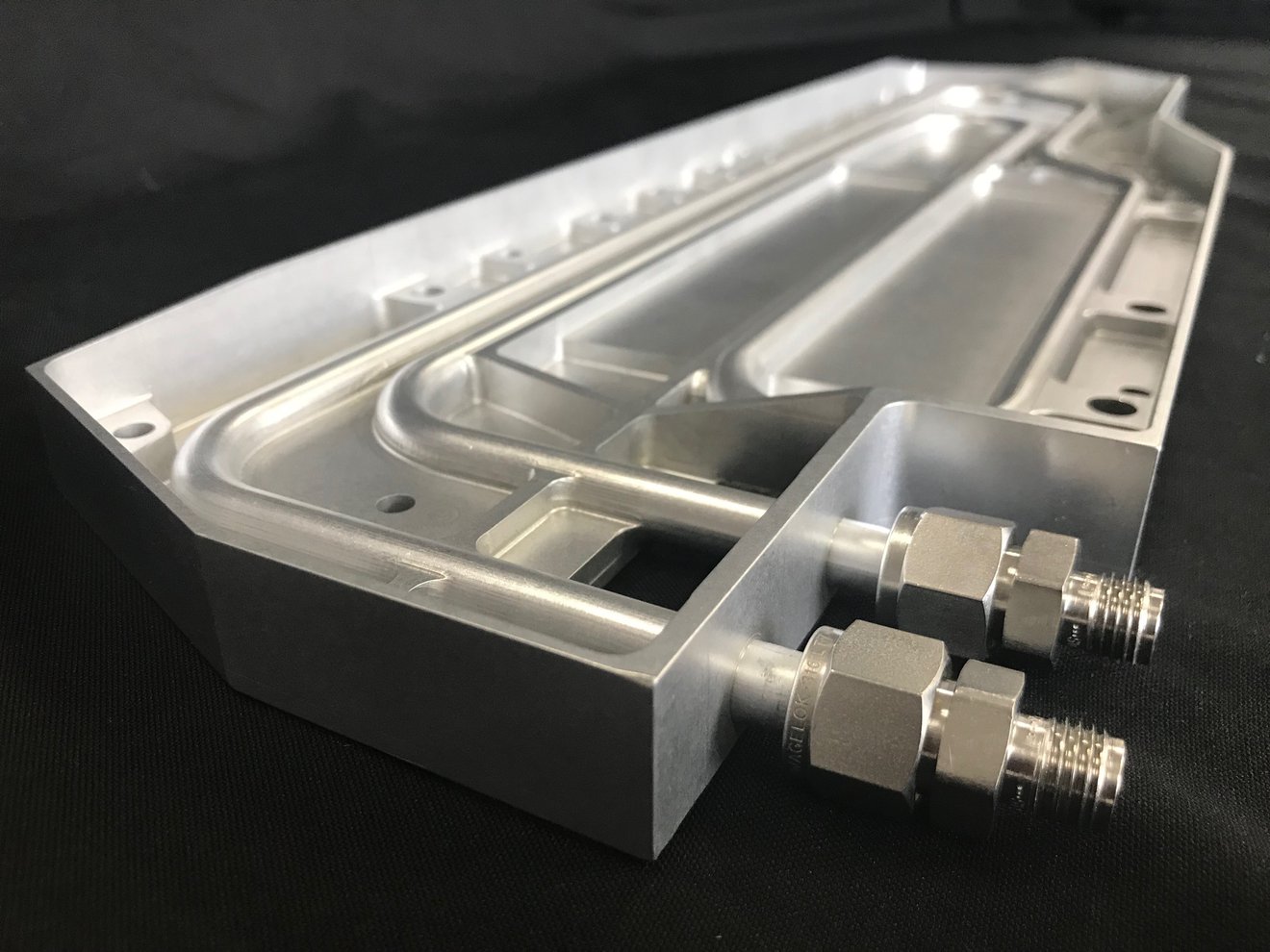Solid-state metal 3D printing specialist Fabrisonic has continued its partnership with NASA’s Jet Propulsion Laboratory (JPL) to produce 3D printed heat exchangers for the latter’s spacecrafts using its proprietary ultrasonic additive manufacturing (UAM) technology.
Tasked with improving the reliability of heat exchangers used in NASA’s spacecraft, Fabrisonic worked with NASA JPL technologist Scott Roberts to create a new heat exchanger design that can be 3D printed in a single piece.
The new design replaces dozens of small parts and joints that could potentially fail during a long-term mission or under extreme conditions, and has prospective benefits not only for space applications but also within sectors such as oil drilling and aeronautics.
“The problems I’m working on don’t solve one problem for one mission, they’re going to solve a class of problems for both NASA and industry,” said Roberts.

Fabrisonic’s UAM technology
Fabrisonic’s UAM technology is a hybrid metal 3D printing process that uses ultrasonic vibrations to weld together successive layers of metal foils into a 3D shape that can then be CNC-machined to provide more complex features.
The technology is capable of operating at low temperatures, making it suitable for the 3D printing of integrated electronics, and also facilitates 3D printing at high speed. In 2017, the company patented its UAM printing technique and later released its UAM-based SonicLayer 1200 machine.
Since its founding in 2011, Fabrisonic has partnered with NASA on several occasions. In 2019, the firm worked with optical sensor specialist Lunar Innovations to 3D print sensors directly onto a NASA fuel pipe, and a year later embarked on a NASA SBIR project to successfully merge different amorphous alloys into corrosion-resistant multi-metal cladding using its UAM process.
Fabrisonic and NASA JPL first started exploring how UAM could be used to produce 3D printed heat exchangers back in 2018. At the time, the 3D printed components passed NASA’s quality control tests and were deemed ready for flight in space. Earlier this year, the partners announced they had developed better-value 3D printed heat exchangers for satellites using the SonicLayer 1200.
“Without SBIR and other government support, Fabrisonic may not have crossed the chasm between startup and commercial success,” said Mark Norfolk, President of Fabrisonic. “It has enabled important research and developments. It makes critical information available, such as materials characterization data and case studies that help spread technology.”

The UAM printed heat exchangers
In space, temperature extremes can vary by hundreds of degrees. Heat exchangers can help to maintain a steady temperature inside a spacecraft by either drawing in or expelling heat, and typically contain a long snaking pipe attached to a metal plate with brackets and epoxy.
Heat exchangers manufactured via conventional means usually consist of multiple interconnected parts, which introduces many potential points of failure to the device. To solve this problem, Roberts leveraged Fabrisonics UAM technology to 3D print the heat exchanger in a single piece.
By printing the heat exchanger in a single piece, the reliability of the component is notably improved and reduces the likelihood of part failure during long-term space missions or under extreme conditions on earth. The 3D printed heat exchanger also delivered performance gains, reportedly weighing around 30 percent less and performing 30 percent better than parts made through traditional methods.
The technology is also capable of rapidly welding together layers as large as six feet square, making it possible to create parts with complex geometries in a matter of days, rather than months. As a result, the development cycle for NASA’s spacecraft can be shortened and the manufacturing of commercial parts significantly sped up.

Other Fabrisonic-NASA JPL technology breakthroughs
NASA JPL has also leveraged Fabrisonic’s UAM technology to strike an optimal balance between protecting electronic components from intense space radiation and keeping components as lightweight as possible.
Fabrisonic’s UAM technology enabled layers of the radiation-resistant metal tantalum to be printed in the middle of aluminum spacecraft parts, with each metal’s properties remaining constant and able to perform as expected.
By combining aluminum and tantalum, NASA was able to achieve 3D printed components that were both resistant to radiation but also extremely light.
Elsewhere, NASA has utilized fiber optic sensors printed via UAM in its aeronautics testing to detect weaknesses and performance issues in commercial airframes. The sensors were built into the interior of aluminum parts using UAM and were capable of obtaining accurate, real-time data about the health and performance of the metal.
Being protected within the metal, the sensors are capable of functioning in harsh environments, such as space.
Subscribe to the 3D Printing Industry newsletter for the latest news in additive manufacturing. You can also stay connected by following us on Twitter and liking us on Facebook.
Looking for a career in additive manufacturing? Visit 3D Printing Jobs for a selection of roles in the industry.
Subscribe to our YouTube channel for the latest 3D printing video shorts, reviews and webinar replays.
Featured image shows UAM eliminated the need for thermal interfaces and hardware in this aluminum heat exchanger. Photo via Fabrisonic.


